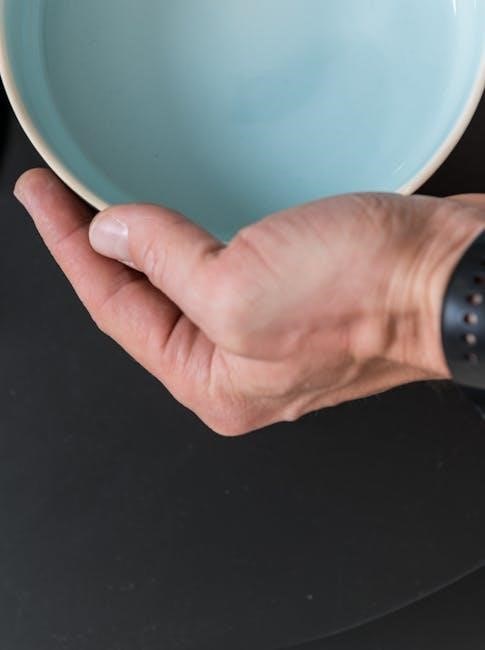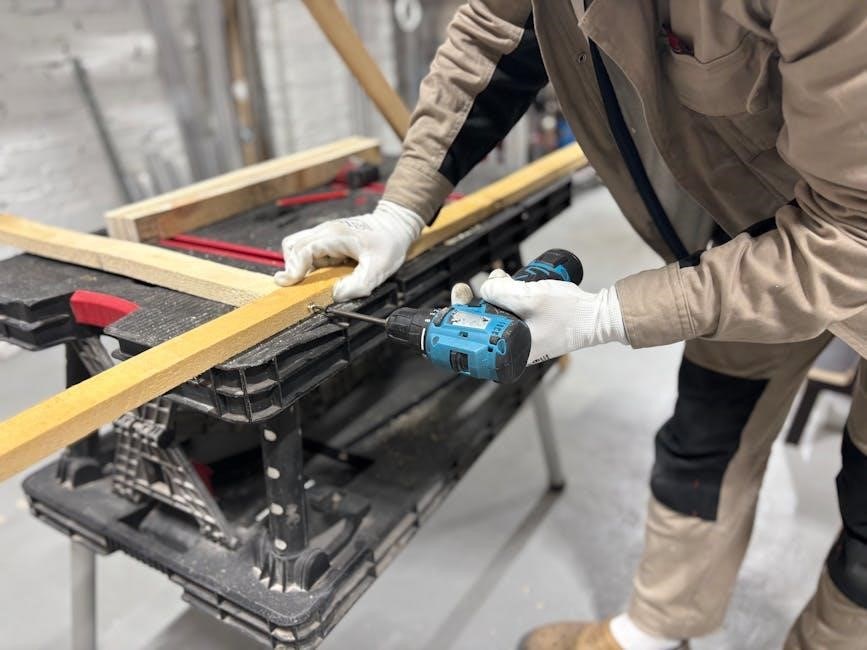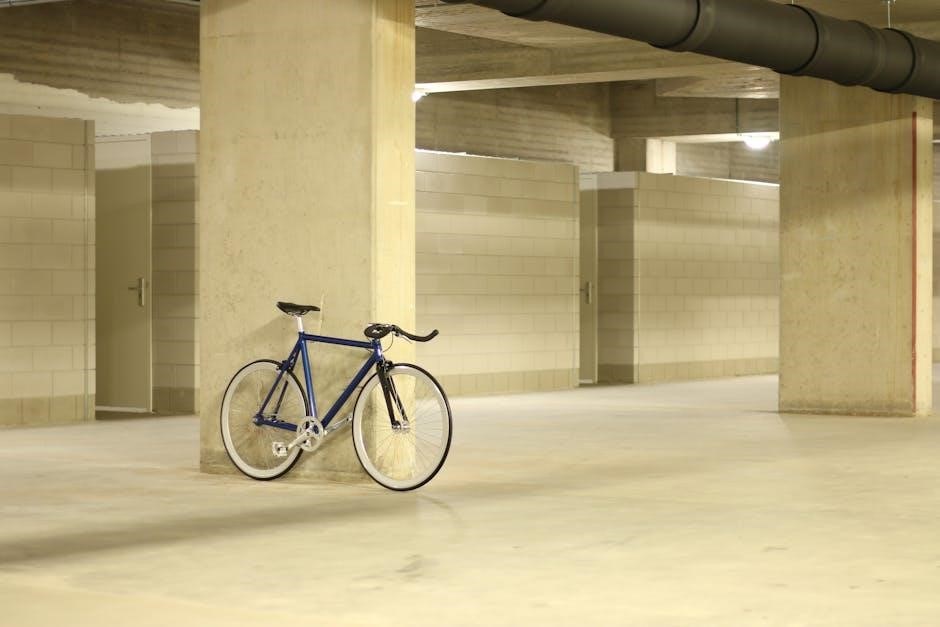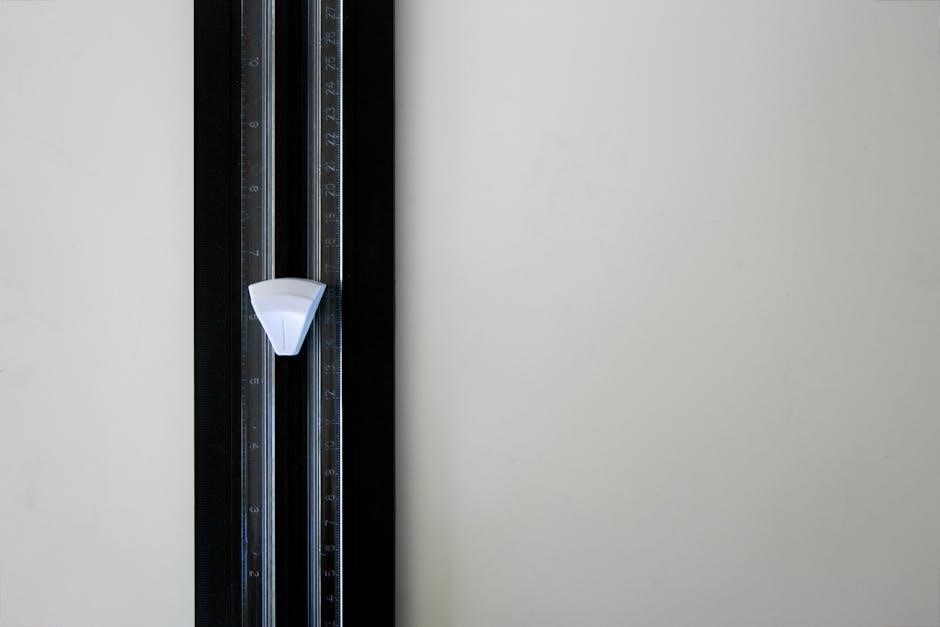Understanding Your Dehumidifier: The Basics
A dehumidifier removes excess moisture from the air by drawing in moist air, condensing water vapor on a cool surface, and releasing dry air back into the room.
How a Dehumidifier Works
A dehumidifier operates by pulling moist air into the unit using a fan. This air then passes over a cooled surface, typically a refrigerated coil, which causes the water vapor to condense into liquid droplets. These droplets collect in a built-in tank or are drained externally. The dried air is then reheated slightly and circulated back into the room. This continuous cycle reduces humidity levels, making the space more comfortable and preventing mold growth. Regular maintenance, such as emptying the water tank and cleaning filters, ensures optimal performance. Proper setup and placement are also crucial for efficient operation.
Types of Dehumidifiers
Dehumidifiers come in various types, each designed for specific needs. Portable dehumidifiers are compact and ideal for small spaces like basements or closets. Whole-house dehumidifiers integrate with HVAC systems, providing comprehensive moisture control throughout the home. Desiccant dehumidifiers use absorbent materials to remove moisture, effective in colder temperatures. Refrigerant-based models are the most common, using cooled coils to condense water vapor. Smart dehumidifiers offer advanced features like app control and humidity sensors. Each type has unique benefits, so choosing the right one depends on the size of the space, humidity levels, and personal preferences. Proper selection ensures efficient humidity management and improved indoor air quality.

Choosing the Right Dehumidifier for Your Home
Choosing the right dehumidifier involves assessing your space size, humidity levels, and desired features like energy efficiency or smart technology to ensure optimal performance and comfort.
Factors to Consider When Buying a Dehumidifier
When selecting a dehumidifier, consider the size of your space, the level of humidity, and the unit’s capacity. Choose a model that matches your room’s square footage and moisture levels for optimal performance. Check the dehumidifier’s water removal capacity, usually measured in pints per day, to ensure it can handle your space’s humidity effectively. Energy efficiency is another key factor, so look for models with an ENERGY STAR rating. Additional features like smart app control, automatic drainage, and multiple fan speeds can enhance convenience. Assess your budget and the unit’s noise level, especially if it will be used in living areas. Proper sizing and feature alignment ensure better results and energy savings.
Signs You Need a Dehumidifier
Excess moisture in your home can lead to mold growth, musty odors, and water damage. Condensation on windows or walls is a clear indicator of high humidity. If you notice water stains on ceilings or walls, it may signal poor ventilation and moisture buildup. Mold or mildew growth in basements, bathrooms, or laundry areas is another sign. Musty smells lingering in your home also point to excessive humidity. Additionally, if you experience frequent dust mites, allergies, or rust on metal surfaces, it’s time to consider a dehumidifier. Addressing these issues early can prevent costly repairs and improve indoor air quality.

Installing and Setting Up Your Dehumidifier
Place the dehumidifier upright for at least 1 hour before use to allow the refrigerant to stabilize. Ensure good airflow around the unit for optimal performance;

Placement Tips for Optimal Performance
Position your dehumidifier in a central location within the room for efficient airflow. Keep it at least 6 inches away from walls and furniture to ensure proper circulation. Close all doors and windows to maximize moisture removal. Placing the unit in low-lying areas, like basements, can help address moisture more effectively. Ensure the dehumidifier is on a level surface to avoid improper drainage. Clean the surrounding area regularly to prevent dust buildup and maintain peak performance. Proper placement enhances efficiency, reduces noise, and prevents potential damage from water spilling or uneven operation.
Pre-Operation Checklist

Before using your dehumidifier, ensure it is placed upright for at least 1 hour to allow the refrigerant to stabilize, especially if it was tilted during transport. Check for any visible damage or blockages in the air vents or filters. Empty the water tank if it’s full and ensure it’s securely fitted. Set the desired humidity level according to your preferences. Plug the unit into a grounded electrical outlet and avoid using extension cords. If the unit was stored in a cold environment, allow it to reach room temperature before turning it on. Finally, review the user manual for specific model recommendations to ensure optimal performance and safety.

Operating Your Dehumidifier Effectively
Place the dehumidifier in a central location, ensure good airflow around it, and adjust settings to maintain optimal humidity levels for comfort and efficiency in your space.
Best Practices for Using Your Dehumidifier
To maximize efficiency, place the dehumidifier in a central location with adequate space around it for proper airflow. Close all doors and windows to ensure it works effectively in the targeted area. Regularly empty the water tank or ensure proper drainage to prevent overflow and maintain performance. Adjust settings according to humidity levels, aiming for an ideal range of 30-50%. Clean filters and coils periodically to optimize functionality. Avoid placing it near heating vents or direct sunlight, as this can affect accuracy. For best results, monitor humidity levels and adjust settings seasonally to maintain comfort and energy efficiency.
Understanding Ideal Humidity Levels
The ideal indoor humidity level ranges between 30-60%, depending on outdoor temperatures. For temperatures between 20-40°F, aim for 40% or lower. At 40-50°F, maintain 35-45%, and above 50°F, 30-50% is suitable. Lower humidity reduces mold growth and dust mites, while higher levels can cause condensation. Use a hygrometer to monitor levels accurately. Adjust your dehumidifier settings to maintain these ranges for optimal comfort and energy efficiency. Proper humidity control prevents moisture issues and enhances indoor air quality; Regularly check and adjust settings to match seasonal changes and indoor conditions for the best results.

Maintenance and Troubleshooting
Regularly clean the filter and check for blockages to ensure optimal performance. Drain the water tank frequently and monitor for error codes to address issues promptly and efficiently.
Regular Maintenance Tasks
Regular maintenance is essential to ensure your dehumidifier operates efficiently and effectively. Start by cleaning or replacing the air filter as recommended by the manufacturer to improve airflow and performance. Check and clean the pre-filter regularly to prevent dust buildup. Empty the water tank frequently to avoid overflow and bacterial growth. Ensure proper drainage by checking the hose for kinks or blockages. Additionally, inspect the grill and coils for dust and debris, cleaning them gently as needed. Finally, allow the unit to stand upright for at least an hour after moving to prevent refrigerant issues. Following these tasks will extend the lifespan of your dehumidifier and maintain its efficiency.
Troubleshooting Common Issues
If your dehumidifier isn’t working properly, start by checking the power supply and ensuring it’s plugged in correctly. If the unit isn’t turning on, verify that the circuit breaker hasn’t tripped. For error codes like E2 or AP, refer to the manual for specific solutions. If water isn’t being collected, ensure the humidistat is set correctly and the filter is clean. Leaks may indicate a blocked drain hose or full water tank. Allow the unit to stand upright for at least an hour after moving to prevent refrigerant issues. Regularly cleaning the grill and coils can also resolve performance problems. Always consult the manual or contact support for persistent issues.

Additional Tips for Using Your Dehumidifier
Regularly clean the filter and check the drain hose for blockages. Ensure proper airflow around the unit for optimal performance and energy efficiency.
Using Dehumidifier Water for Plants
Dehumidifier water, collected from the air, can be safely used for watering plants. However, it’s important to note that this water lacks minerals found in tap water. It’s ideal for indoor plants and herbs but may not be suitable for seedlings or carnivorous plants requiring pure water. Always filter or mix it with tap water to ensure balanced mineral content. Additionally, boiling the water before use can eliminate any bacteria or impurities. This eco-friendly practice reduces water waste and benefits your plants, making it a practical solution for eco-conscious homeowners.
Energy Efficiency and Cost Savings
Using an energy-efficient dehumidifier helps reduce electricity consumption and lower utility bills. Opt for models with an ENERGY STAR rating, as they are designed to use less energy while maintaining high performance. Proper sizing and placement also contribute to cost savings. Running the dehumidifier only when needed and ensuring good airflow can enhance efficiency. Regular maintenance, like cleaning filters, further optimizes performance and reduces energy use. Smart sensors and programmable timers allow precise control, preventing overuse and saving energy. By choosing the right settings and maintaining your unit, you can enjoy a comfortable home while minimizing energy costs and environmental impact.

Advanced Features and Smart Technology

Modern dehumidifiers offer smart app control, remote monitoring, programmable timers, and voice commands via Wi-Fi, enhancing convenience through integrated advanced sensors and touchscreens seamlessly.
Smart App Control and Remote Monitoring
Smart dehumidifiers come with app control, allowing users to monitor and adjust settings remotely. Download the app, scan the QR code, and create an account to access features like humidity level adjustments, operation modes, and scheduling. Remote monitoring ensures optimal performance without physical interaction. Receive notifications for filter cleaning, tank emptying, or error codes. Voice control via smart home systems adds convenience. This advanced technology enhances user experience by providing real-time data and seamless control from anywhere, ensuring your home stays dry and comfortable effortlessly.
Special Modes and Features
Modern dehumidifiers offer advanced modes and features for enhanced performance. Continuous mode ensures non-stop operation until the desired humidity is reached, while turbo mode accelerates moisture removal. Fan speed settings allow you to adjust airflow, minimizing noise for quieter operation. Automatic shut-off activates when the tank is full or when the set humidity level is achieved. Some models include defrost mode to prevent ice buildup in low temperatures. Energy-saving features like low-power modes reduce consumption, while adaptive sensors optimize performance based on room conditions. These specialized modes and features provide convenience, efficiency, and tailored solutions for various spaces and needs, ensuring optimal comfort and air quality.



